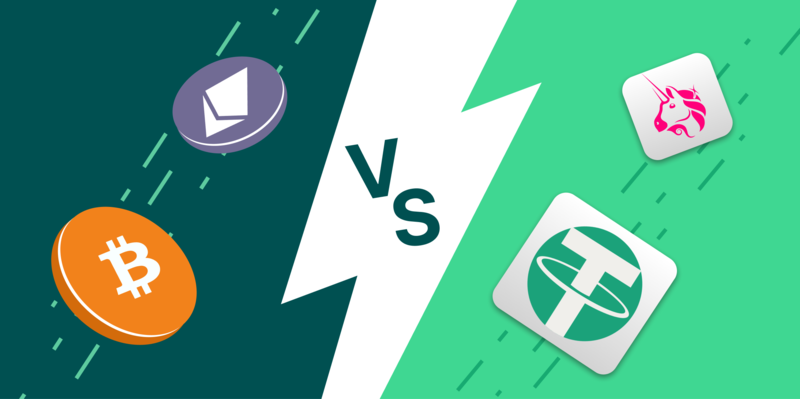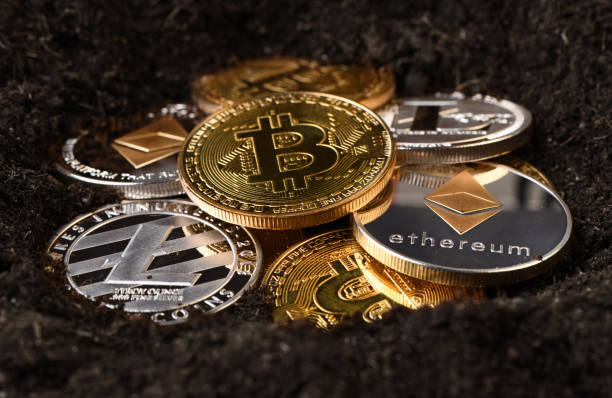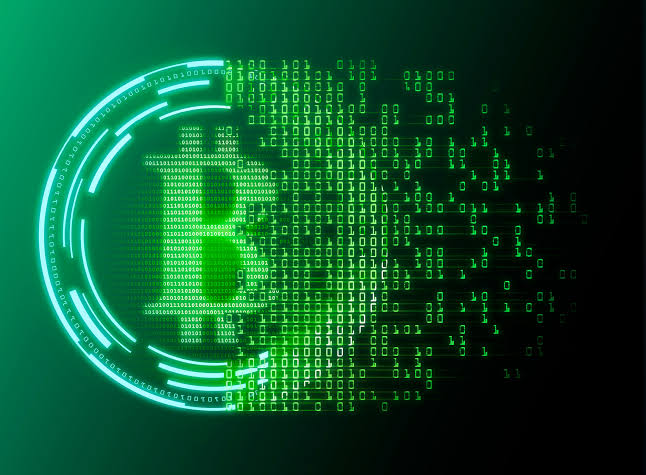
Introduction
Hey there! Ever found yourself scratching your head over the difference between tokens and coins in the world of cryptocurrency? You’re not alone. It’s a common question among newcomers to the crypto space. But don’t worry—by the time you finish reading this article, you’ll have a crystal-clear understanding of tokens and coins, their differences, and why they matter. So, grab a cup of coffee, and let’s dive into the fascinating world of digital assets.
What are Coins in Cryptocurrency?

The Basics of Coins
Coins are digital or virtual currencies that operate independently on their own blockchain. Think of Bitcoin (BTC), Ethereum (ETH), and Litecoin (LTC). These coins have their own native blockchain and serve primarily as a means of exchange or store of value.
How Coins Work
Coins work much like traditional money but in the digital realm. They can be used to buy goods and services, transferred between individuals, or held as an investment. Their value is often driven by supply and demand, market speculation, and underlying technology.
Examples of Popular Coins
- Bitcoin (BTC): The pioneer of cryptocurrencies, often referred to as digital gold.
- Ethereum (ETH): Known for its smart contract capabilities.
- Litecoin (LTC): Often called the silver to Bitcoin’s gold, with faster transaction times.
What are Tokens in Cryptocurrency?

The Basics of Tokens
Tokens are digital assets created on an existing blockchain. Unlike coins, they do not have their own blockchain but rely on another platform’s infrastructure, such as Ethereum, Binance Smart Chain, or Solana.
Types of Tokens
- Utility Tokens: These provide access to a product or service within a blockchain ecosystem. For example, Filecoin (FIL) is used to purchase storage space on the Filecoin network.
- Security Tokens: Represent ownership in an asset, similar to traditional securities like stocks. They are subject to regulatory oversight.
- Governance Tokens: Allow holders to participate in the decision-making process of a blockchain project. An example is Uniswap (UNI), where holders can vote on protocol changes.
- Non-Fungible Tokens (NFTs): Unique digital assets representing ownership of a specific item, often used for digital art, collectibles, and gaming.
How Tokens Work
Tokens are created through Initial Coin Offerings (ICOs) or Token Generation Events (TGEs). They function within their parent blockchain’s framework and frequently power decentralized applications (dApps).
Examples of Popular Tokens
- Tether (USDT): A stablecoin pegged to the US dollar.
- Chainlink (LINK): Provides real-world data to smart contracts on the blockchain.
- Uniswap (UNI): Used for governance within the Uniswap decentralized exchange.
Key Differences Between Coins and Tokens
Independent Blockchains vs. Existing Platforms
Coins have their own blockchain, while tokens operate on top of an existing blockchain. This fundamental difference impacts their use cases and creation methods.
Purpose and Use Cases
Coins are primarily used as a medium of exchange or a store of value, whereas tokens have a broader range of uses, including access to services, representing assets, and enabling governance.
Creation Process
Creating a coin requires developing a new blockchain from scratch, which is complex and resource-intensive. In contrast, creating a token is relatively easier and less costly, as it involves utilizing an existing blockchain platform.
The Role of Coins and Tokens in the Crypto Ecosystem
Coins as Digital Currency
Coins like Bitcoin and Ethereum have become synonymous with digital currency, enabling peer-to-peer transactions without intermediaries. They are the foundation of the crypto ecosystem, driving innovation and adoption.
Tokens and Decentralized Applications (dApps)
Tokens play a crucial role in the functionality of dApps. They enable access to services, incentivize user participation, and facilitate decentralized governance. In the decentralized finance (DeFi) space, tokens facilitate activities like lending, borrowing, and earning interest.
Security Tokens and Asset Representation
Security tokens are revolutionizing the way we think about ownership and investment. They provide a digital representation of real-world assets, such as real estate or stocks, making them more accessible and tradable.
NFTs and Digital Ownership
Non-fungible tokens have opened up new possibilities for digital ownership and creativity. Artists, musicians, and game developers are leveraging NFTs to monetize their work and engage with their audience in novel ways.
The Importance of Understanding Tokens and Coins
Making Informed Investment Decisions
Understanding the differences between coins and tokens is crucial for making informed investment decisions. Knowing whether you’re investing in a native cryptocurrency or a token built on another platform can impact your risk and potential returns.
Navigating the Crypto Market
The crypto market is vast and ever-evolving. By understanding the distinct roles of coins and tokens, you can better navigate this space, identifying opportunities and avoiding potential pitfalls.
Engaging with Blockchain Technology
Whether you’re a developer, investor, or enthusiast, understanding coins and tokens enhances your ability to engage with blockchain technology. It opens up opportunities to participate in projects, contribute to communities, and leverage the technology for various purposes.
Challenges and Risks Associated with Tokens and Coins
Market Volatility
Both coins and tokens are subject to significant market volatility. Prices can fluctuate wildly based on market sentiment, regulatory news, and technological developments.
Security Concerns
Security is a major concern in the crypto space. Hacks, scams, and fraud are prevalent, and both coins and tokens can be targets. It’s essential to use secure wallets and platforms and to stay informed about best practices for protecting your digital assets.
Regulatory Uncertainty
The regulatory landscape for cryptocurrencies and tokens is still evolving. Different countries have different approaches, and regulatory changes can impact the value and legality of certain assets.
Technological Risks
Blockchain technology is still in its early stages, and there are risks associated with bugs, vulnerabilities, and the potential for network congestion. Both coins and tokens can be affected by these technological challenges.
Future Trends in Tokens and Coins
Increasing Adoption of Stablecoins
Stablecoins, which are pegged to stable assets like fiat currencies, are gaining popularity for their ability to mitigate volatility. They are becoming a preferred medium of exchange and a bridge between traditional finance and the crypto world.
Growth of Decentralized Finance (DeFi)
DeFi is revolutionizing the financial industry by providing decentralized alternatives to traditional financial services. Tokens are at the heart of this movement, enabling lending, borrowing, and yield farming on a decentralized platform.
Expansion of NFT Use Cases
NFTs are expanding beyond digital art and collectibles. They are being used in gaming, virtual real estate, and even as digital identity tokens. This trend is likely to continue as more industries explore the potential of NFTs.
Enhanced Interoperability
Interoperability between different blockchains is becoming increasingly important. Projects are working on solutions to enable seamless interaction between various blockchain networks, enhancing the utility of both coins and tokens.
How to Get Started with Coins and Tokens
Setting Up a Wallet
To start using coins and tokens, you’ll need a digital wallet. Wallets come in various forms, including hardware wallets, software wallets, and mobile wallets. Choose one that suits your needs and security preferences.
Choosing a Reliable Exchange
To buy and trade coins and tokens, you’ll need to use a cryptocurrency exchange. Look for a reputable exchange with a wide range of supported assets, robust security features, and a user-friendly interface.
Researching Projects
Before investing in any coin or token, it’s essential to do your research. Look into the project’s team, technology, use case, and community support. Understanding the fundamentals will help you make informed decisions.
Staying Informed
The crypto space is dynamic and constantly evolving. Stay informed by following industry news, participating in online communities, and engaging with educational resources. Knowledge is your best tool for navigating this space.
Conclusion
There you have it—a comprehensive guide to understanding tokens and coins in the world of cryptocurrency. Whether you’re a newbie just dipping your toes in or an experienced trader looking to deepen your knowledge, grasping these fundamental concepts is key to your success in the crypto space. Remember, the world of digital assets is vast and exciting, with endless opportunities for exploration and growth. So, keep learning, stay curious, and happy investing!
Read Related Posts
TON (The Open Network): Future of Decentralized Communication
Solana: The High-Speed Blockchain Revolution
FAQs
The main difference lies in their underlying technology. Coins run on their own blockchain, while tokens rely on existing blockchains.
While some tokens can function as currency, their main roles often include providing access to services, representing assets, or enabling governance.
New tokens are usually created through Initial Coin Offerings (ICOs) or Token Generation Events (TGEs) on existing blockchain platforms.
Not necessarily. Regulatory treatment can vary based on the asset’s function and classification (e.g., utility token vs. security token) and the jurisdiction’s specific laws.
Ethereum, Binance Smart Chain, and Solana are among the most popular platforms for creating tokens due to their robust infrastructure and wide adoption.


